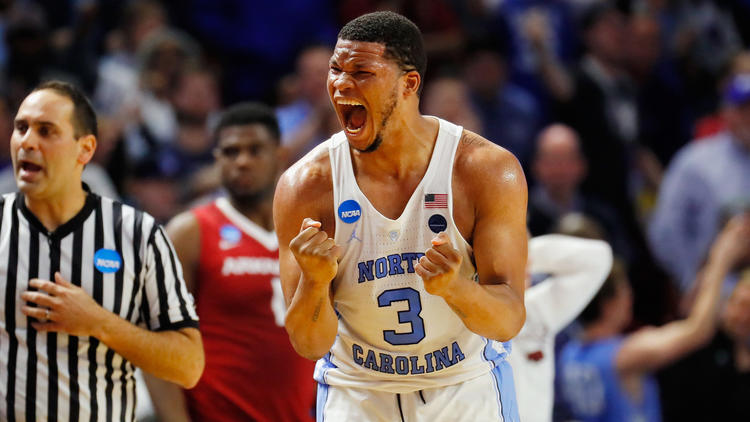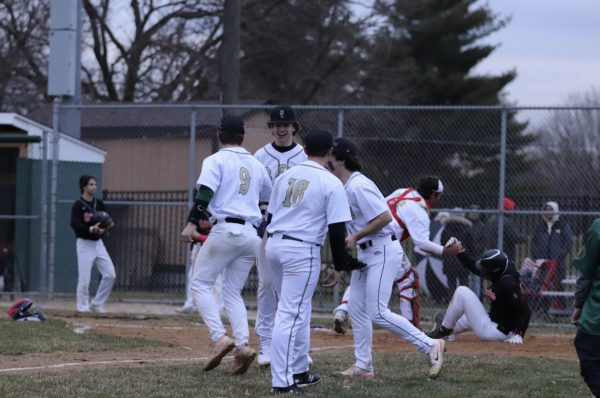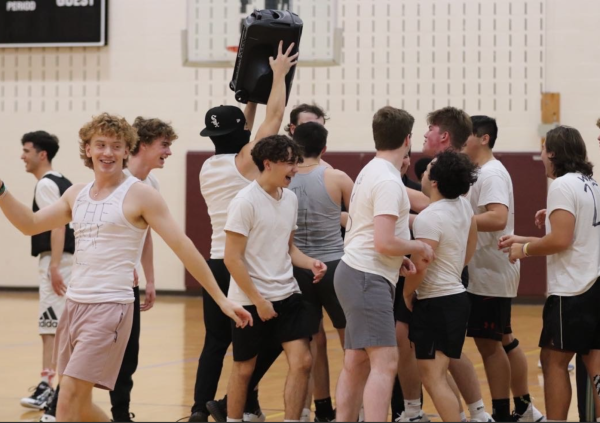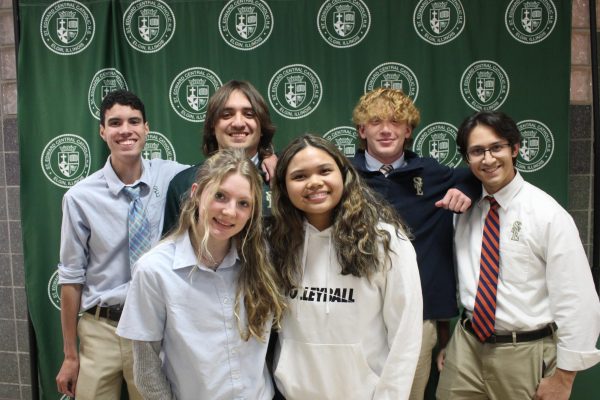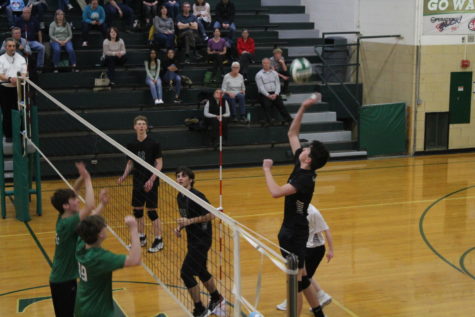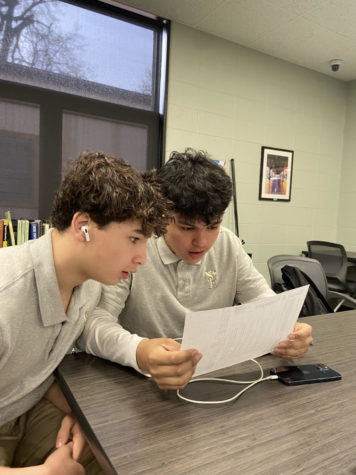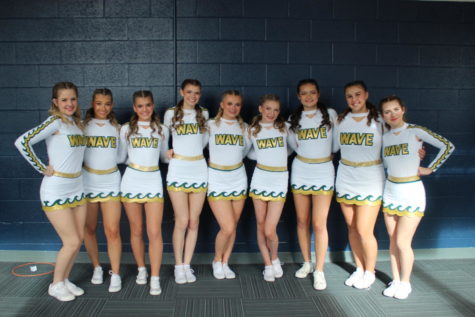Stream of Consciousness: March Madness
Senior center Kennedy Meeks was one of the main reasons for North Carolina’s success in the past two seasons.
April 3, 2017
Disclaimer: I committed pretty much my entire weekend to watching basketball, as well as countless hours before the Tournament, and I still have absolutely no explanation for how Florida State lost to Xavier by 25, or how Josh Hart choked during two of the biggest possessions of the season that ultimately led to Villanova being the first 1-seed to lose, or how the Big Ten went from a mediocre-at-best conference during the regular season to the most impressive conference in the Tournament.
So here’s my attempt to dissect what I’ve seen and figure out what it all means formatted using the words of the iconic March Madness song “One Shining Moment”:
The ball is tipped…
The first games of the day were some of the very best of the Tournament. Notre Dame vs. Princeton started everything off with a surprisingly intense game. There has yet to be a buzzer-beating game winner, but Princeton’s Devin Cannady was centimeters away from hitting the game-winning three. The next day Michigan barely edged out Oklahoma State in an ol’ fashioned shootout. Michigan managed their 1-point victory thanks in large part to their ability to shoot threes (16-29, a Michigan tournament record) and hit clutch free throws (6-6 at the line in the final 30 seconds).
The second round was more of the same. Notre Dame was in another early thriller, but unfortunately for the Fighting Irish they weren’t able to come away with another victory. West Virginia’s feisty defense was simply too much for the Irish to overcome, but Notre Dame’s Bonzi Colson was surprisingly good. He’s a 6’5” big man who does pretty much everything for Notre Dame. He led the Irish with 27 points and eight rebounds while playing with foul trouble for much of the second half. Sunday’s opener was the best of the opening weekend. Michigan kept up their incredible hot streak with a close victory over Louisville. The Cardinals were leading for much of the game, but then Michigan caught fire and turned the game around thanks to their German big man Moritz Wagner who poured in 26 points on 11-14 shooting.
And there you are…
As impossible as it is for fans to fill out a perfect bracket, it is just as unlikely the selection committee creates a perfect bracket. There will always be snubs and misplaced teams, but the errors of the committee seem especially apparent this year. Most of the teams in the Big Ten were seeded unfairly or unjustly. Minnesota received a 5 seed, Michigan was a 7 seed, and Wisconsin was an 8 seed. Somehow, for reasons unbeknownst to me, Minnesota got a 5 seed. They had one key win during the season against Purdue but that was all the way back on January 1st. They got hot late in February, but against mostly weak teams. They were 1-2 against Michigan State but were slotted four seeds higher, they were 0-2 against Wisconsin but were somehow three seeds higher, and they lost to Michigan early in the Big Ten Tournament but still received a 5 seed to Michigan’s 7. It was so obvious that the Golden Gophers were undeserving of their seed that 12 seeded Middle Tennessee State, was actually a 1.5 point favorite. A 12 seed was favored over a 5 seed. That’s not just a popular upset pick, that’s many people recognizing that Minnesota simply wasn’t that good.
Villanova can also thank their premature exit to the committee’s inability to seed teams correctly. Wisconsin was definitely worthy of more than an 8 seed. They finished second in the Big Ten during the regular season and reached the Big Ten Championship game. Whether the commitee judged overall success or recent success, Wisconsin excelled in both categories. The Badgers are loaded with players who have a lot of postseason experience, which is an underrated variable when evaluating good tournament teams. Of course, I am able to recognize this now but not when I filled out my bracket and had the Badgers losing in the first round to Virginia Tech. After all, hindsight is 20/20.
Running for your life…
Could this be the year that a run n’ gun, up-tempo team gets hot and walks away as champs? UCLA and Kentucky like to play at a very fast paced game and they both lead the Tournament field with 75 possessions per game. North Carolina, Kansas, and West Virginia also have a very up-tempo style of play. The Tar Heels, Wildcats, and especially the Mountaineers combine a fast paced offense with an intense, pressure defense. They try to force their opponents into quick, poor shots while also heavily playing the passing lanes to bite on the increased amount of mistakes that frantic offenses make. UCLA and Kansas, on the other hand, just outscore their opponents. They are capable of playing quality defense if they really have to, but they generally rely on their ability to simply make more shots than their opponents. That mentality does not usually produce promising results. Florida State, Creighton, and Oklahoma State can all attest to that. However, none of those teams are as talented as the Bruins or Jayhawks. The case could be made for Florida State, but they lack a Naismith Award Finalist point man like Bruin Lonzo Ball or Jayhawk Frank Mason III.
You’re a shooting star…
Almost every year there is a player who gets hot during the Tournament and plays himself into an NBA lottery pick. They aren’t usually worth a top pick in the draft, but some foolish team inevitably bites on the player’s “star potential” or his “winning mentality.” Last year Buddy Hield led the Oklahoma Sooners to a Final Four appearance while solidifying his early lottery-projected draft stock. The Pelicans selected him with the sixth pick. There were several other factors that went into Hield being traded, but the bottom line is that Hield came in labeled as a lights out shooter but has struggled to find the bottom of the net thus far into his NBA career. An even better example of this is Trey Burke, who carried Michigan to a Championship game appearance and vaulted himself into the ninth pick of the 2013 draft, but has had an extremely disappointing and uneventful NBA career.
This year it is too early to tell exactly who that player will be, but some early candidates are: Dillon Brooks (Oregon), Caleb Swanigan (Purdue), Justin Jackson (North Carolina), and Nigel Hayes (Wisconsin). Brooks and Hayes are very good seniors, but they also don’t have a very high ceiling due to their age. Brooks has had 18 and 19 points in his first two games respectively, while Hayes had a double double in his first game and the game winning shot against Villanova on Saturday. Jackson is also a senior, but he is slightly different because he has been so inconsistent over his four years. Towards the end of the season it seemed like he finally figured things out, but it would be a big risk to spend an early first rounder on him. Swanigan has dominated college basketball during his sophomore season, but he also lacks the elite athleticism that is abundant in the NBA.
What does any of this mean?
This means that there is a lot of madness left to come. Some of the giants have already fallen, and more will inevitably stumble. There’s a good blend between freshmen star power and senior leadership. There are several fast-paced, fun-to-watch teams remaining which are almost certain to provide great games.
If your bracket is already busted, there are plenty of other things to watch for. If you are a fan of an NBA franchise that is run by a seemingly clueless front office who has made questionable draft choices and looks like they will once again have a mid-first round pick due to their overall mediocrity, then you might want to take an invested interest in the four players I mentioned earlier because your team has an advanced risk of drafting one of those players several spots too early. Also, Lonzo Ball.

